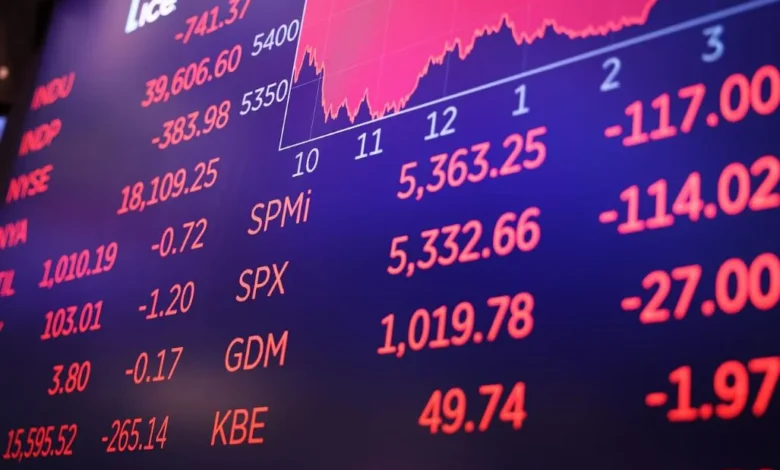

Understanding the Stock Market Meltdown: An In-Depth Analysis
The financial markets faced a major decline on Monday with U.S. and global stocks plummeting amid rising concerns about the American economy’s trajectory. This decline extended the previous week’s sell-off triggered by a disappointing U.S. jobs report. The report showed a slowdown in hiring with unemployment reaching its highest level in nearly three years and intensifying fears of a sharp economic slowdown and possible delays in interest rate cuts by the Federal Reserve.
There were growing apprehensions that technology stocks had surged too rapidly. Major technology companies like Nvidia, Apple, Amazon, Meta, and Alphabet experienced big declines and pulling down the overall market.
The sudden appreciation of the yen posed a threat to Japanese companies and global traders adding to the market’s volatility. Despite the weak jobs report the Federal Reserve had kept interest rates at a two decade high contributing to market unease. Goldman Sachs predicted that the Fed might cut rates more aggressively in the coming months.
The index fell about 2.3 percent by midday recovering slightly from its earlier steep drop. The technology heavy index dropped 2.8 percent. Japan’s Nikkei 225 experienced its most markable one day decline since the Black Monday crash of 1987 falling 12.4 percent. European markets also saw declines with the Pan European Stoxx index dropping 1.5 percent.
The Federal Reserve’s decisions are closely watched by investors according to recent economic data. The Institute for Supply Management’s report indicated modest expansion in the services sector while the Fed’s Senior Loan Officer Opinion Survey highlighted stable demand for commercial and industrial loans. Real estate loan demand continued to weaken reflecting broader economic uncertainties.


The Sahm Rule developed by former Fed economist Claudia Sahm also suggests that a recession is likely when the unemployment rate’s three month moving average exceeds the lowest average of the past year by half a percentage point or more. As of the latest report, U.S. unemployment has surpassed this threshold and raising concerns about an impending recession.
Ms. Sahm suggests that the rule is intended to guide fiscal policy by signaling when Congress should intervene. She also noted that unique factors like the pandemic’s impact on labor force participation and recent immigration trends might affect the rule’s accuracy this time.
Some positive economic indicators, investor sentiment remains shaky. The market’s response reflects a mix of overreaction and genuine concern about future economic conditions. Greg Daco, chief economist at EY described the market panic as “disproportionate,” citing several healthy economic indicators.
The stock market turmoil was compounded by technical issues on major online trading platforms. Over 15,000 Charles Schwab users and thousands of Fidelity and Vanguard clients reported difficulties accessing their accounts hampering their ability to react to market movements. While these issues were resolved by midday the disruption added to the day’s anxiety.
The stock market’s performance has significant political ramifications with the upcoming presidential election. Former President Donald J. Trump quickly capitalized on the market’s decline to criticize current economic policies while Vice President Kamala Harris focused on promoting economic optimism.
The Federal Reserve’s actions in the coming months will also play a crucial role. Potential interest rate cuts could help lower borrowing costs and bolster consumer confidence potentially influencing voter perceptions.
The recent market meltdown highlights the complex interplay of economic indicators, investor sentiment, and political factors. While some data points to a resilient economy big uncertainties remain. For more cues on the direction of the market, investors, legislators, and the general public will be keenly observing forthcoming economic data and Federal Reserve decisions.

